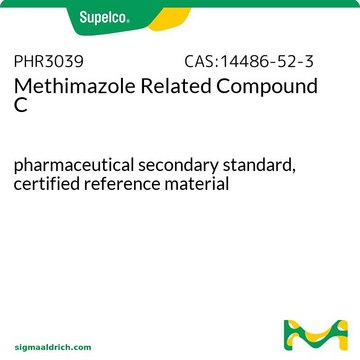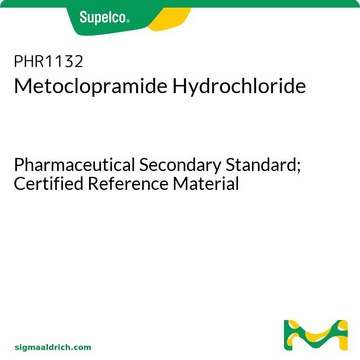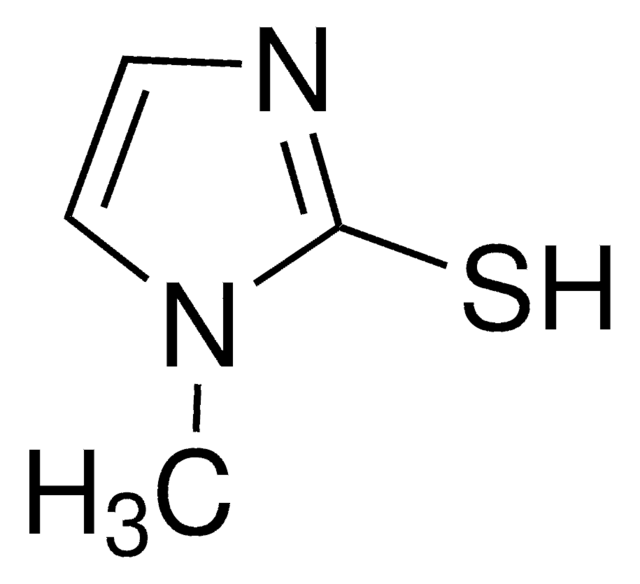1411038
USP
Methimazole Related Compound C
United States Pharmacopeia (USP) Reference Standard
Sinonimo/i:
1-Methyl-2-(methylthio)-1H-imidazole, 1-Methyl-2-(methylsulphanyl)-1H-imidazole
About This Item
Prodotti consigliati
Grado
pharmaceutical primary standard
Famiglia di API
methimazole
Produttore/marchio commerciale
USP
applicazioni
pharmaceutical (small molecule)
Formato
neat
Temperatura di conservazione
2-8°C
Stringa SMILE
S(C)c1[n](ccn1)C
InChI
1S/C5H8N2S/c1-7-4-3-6-5(7)8-2/h3-4H,1-2H3
LKIVEIAXFZBGMO-UHFFFAOYSA-N
Cerchi prodotti simili? Visita Guida al confronto tra prodotti
Descrizione generale
For further information and support please go to the website of the issuing Pharmacopoeia.
Risultati analitici
Altre note
Prodotti correlati
Codice della classe di stoccaggio
10 - Combustible liquids
Classe di pericolosità dell'acqua (WGK)
WGK 3
Punto d’infiammabilità (°F)
Not applicable
Punto d’infiammabilità (°C)
Not applicable
Scegli una delle versioni più recenti:
Certificati d'analisi (COA)
It looks like we've run into a problem, but you can still download Certificates of Analysis from our Documenti section.
Se ti serve aiuto, non esitare a contattarci Servizio Clienti
Possiedi già questo prodotto?
I documenti relativi ai prodotti acquistati recentemente sono disponibili nell’Archivio dei documenti.
Il team dei nostri ricercatori vanta grande esperienza in tutte le aree della ricerca quali Life Science, scienza dei materiali, sintesi chimica, cromatografia, discipline analitiche, ecc..
Contatta l'Assistenza Tecnica.



